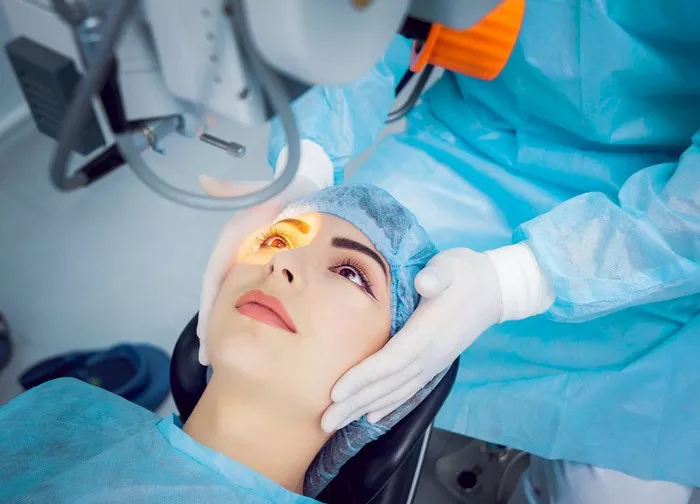Upper blepharoplasty, also known as upper eyelid surgery, is a cosmetic procedure that aims to address sagging skin and excess fat in the upper eyelid area. This surgical intervention can rejuvenate the appearance of the eyes, making them appear more youthful and vibrant. After undergoing upper blepharoplasty, patients often wonder how long it will take for their eyelids to heal and when they can expect to see the final results. In this article, we will explore the typical recovery process and timeline following upper blepharoplasty.
The Immediate Postoperative Period
Immediately after the upper blepharoplasty procedure, patients may experience some discomfort, swelling, and bruising around the eyelid area. The surgeon will provide specific postoperative instructions that should be followed diligently to aid in the healing process. These instructions may include:
- Cold Compresses: Applying cold compresses or ice packs to the eyes can help reduce swelling and bruising in the first 48 hours after surgery.
- Medication: The surgeon may prescribe pain medication and/or antibiotics to manage any discomfort and minimize the risk of infection. It is crucial to take these medications as directed.
- Eyelid Care: Patients will be advised on how to keep the surgical incisions clean and apply any prescribed ointments or eye drops.
- Avoiding Strenuous Activities: Patients should avoid any activities that may strain or elevate blood pressure, such as heavy lifting, rigorous exercise, or bending over, during the initial healing phase.
First Week of Recovery
During the first week of recovery, patients should expect some swelling and bruising, which are normal parts of the healing process. The extent of swelling and bruising can vary among individuals, but it typically subsides gradually over time. Patients can take the following steps to promote healing during this phase:
- Rest and Elevate: Resting with the head elevated on pillows can help reduce swelling. Sleeping on the back and avoiding rubbing or touching the eyelids are also recommended.
- Avoid Makeup: It is crucial to avoid wearing makeup on or around the eyes during the initial healing period to prevent irritation and infection.
- Sunglasses: Wearing sunglasses when going outside can protect the eyes from sunlight, wind, and dust, promoting a more comfortable healing process.
- Follow-up Appointments: Patients will have scheduled follow-up appointments with their surgeon to monitor the healing progress and remove any stitches or sutures.
Subsequent Weeks and Months
As the first week of recovery passes, most patients notice a significant improvement in the appearance of their eyelids. However, it is essential to understand that the complete healing process takes time. Here’s what to expect during the subsequent weeks and months:
- Decreasing Swelling and Bruising: Swelling and bruising continue to subside gradually over the following weeks. By the second or third week, the majority of visible swelling and bruising should have resolved.
- Residual Numbness and Sensitivity: Some patients may experience mild numbness or sensitivity in the eyelid area. This is normal and typically resolves over time.
- Scar Healing: The incision lines from upper blepharoplasty are usually well concealed within the natural creases of the upper eyelids. Initially, the incisions may appear red or pink, but they will gradually fade and become less noticeable over several months.
- Final Results: While individual healing timelines may vary, most patients can expect to see the final results of their upper blepharoplasty within three to six months. By this time, any residual swelling and bruising should have resolved, and the incision lines should have faded, resulting in a more refreshed and youthful appearance.
Factors Affecting Healing
It’s important to note that the healing process after upper blepharoplasty can be influenced by various factors, including:
- Individual Healing Capacity: Each person’s body responds to surgery differently. Factors such as age, overall health, and genetics can impact the speed and quality of healing.
- Adherence to Postoperative Instructions: Following the surgeon’s instructions regarding medication, wound care, and activity restrictions is crucial for optimal healing. Any deviation from these instructions can potentially prolong the healing process.
- Lifestyle Factors: Smoking, excessive alcohol consumption, and poor nutrition can hinder the healing process. It is advisable to maintain a healthy lifestyle and avoid habits that may impede healing.
- Sun Protection: Protecting the skin from excessive sun exposure during the healing phase can help minimize scarring and promote better overall healing.
Consultation with a Surgeon
It is essential to consult with a board-certified plastic surgeon or an ophthalmic plastic surgeon to discuss the specific details of your upper blepharoplasty procedure and the expected recovery timeline. A qualified surgeon will evaluate your individual case and provide personalized guidance based on your unique circumstances.
Conclusion
Upper blepharoplasty is a popular cosmetic procedure for rejuvenating the appearance of the eyes. While the immediate postoperative period may involve some discomfort, swelling, and bruising, the majority of these symptoms resolve within the first week. Over the subsequent weeks and months, swelling and bruising continue to diminish, incision lines fade, and the final results become more apparent. By adhering to postoperative instructions and maintaining a healthy lifestyle, patients can help optimize their healing process and enjoy the full benefits of upper blepharoplasty, achieving a more youthful and rejuvenated appearance of the upper eyelids.


